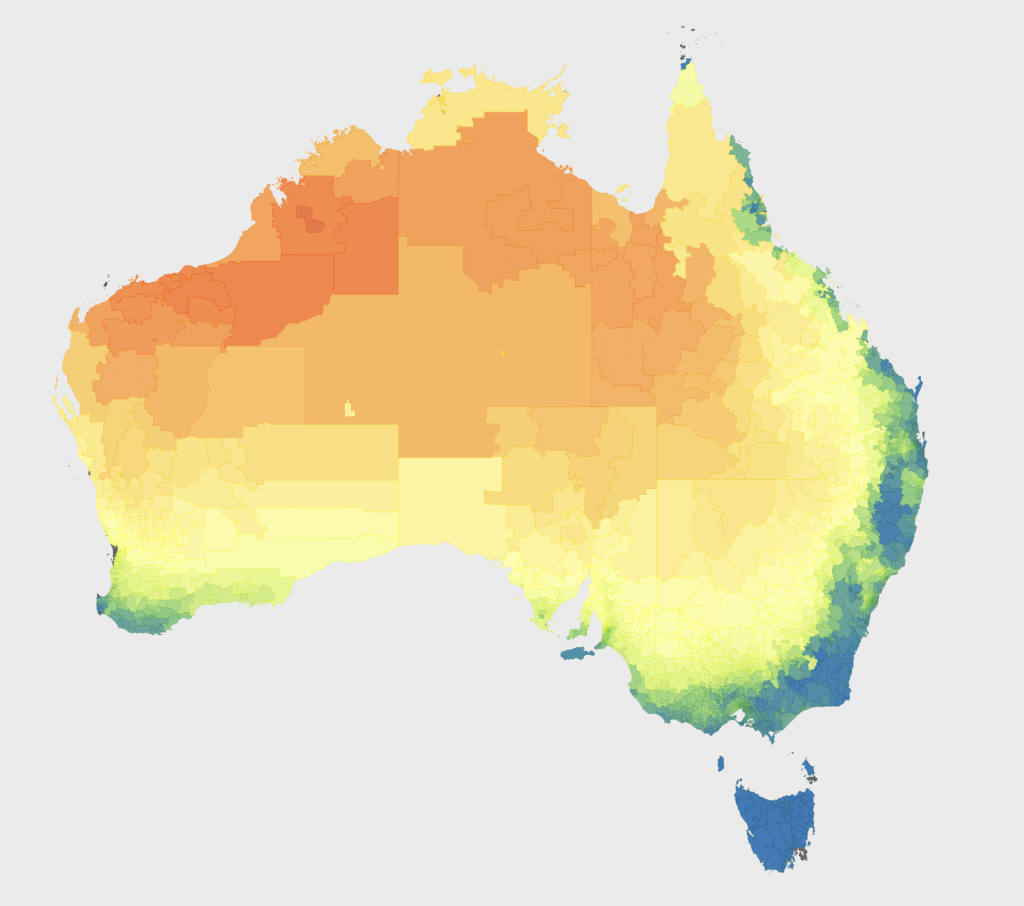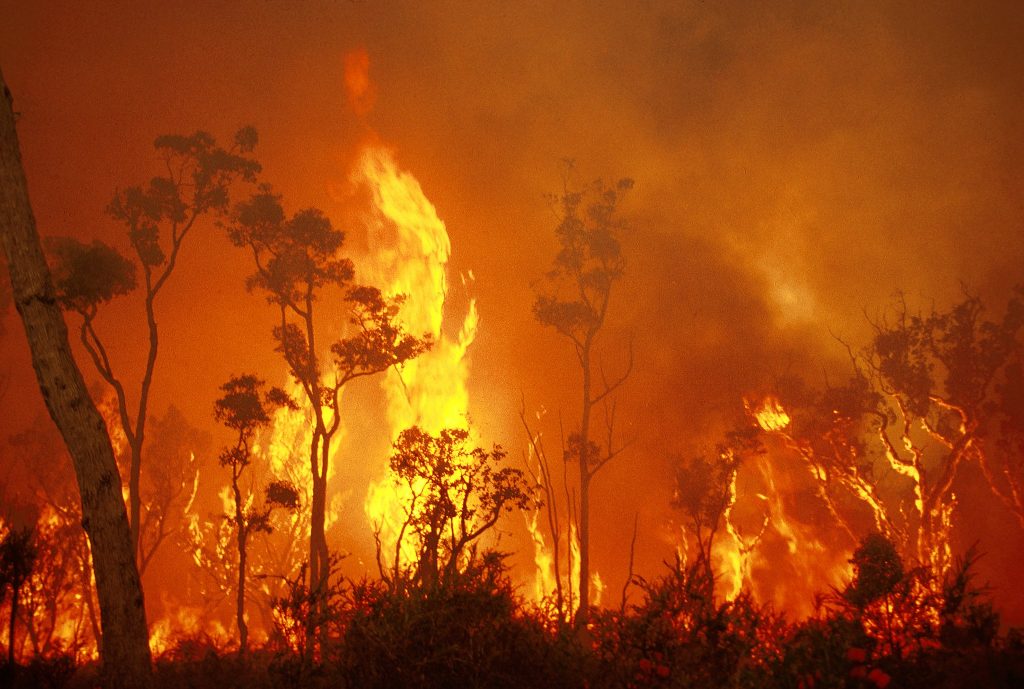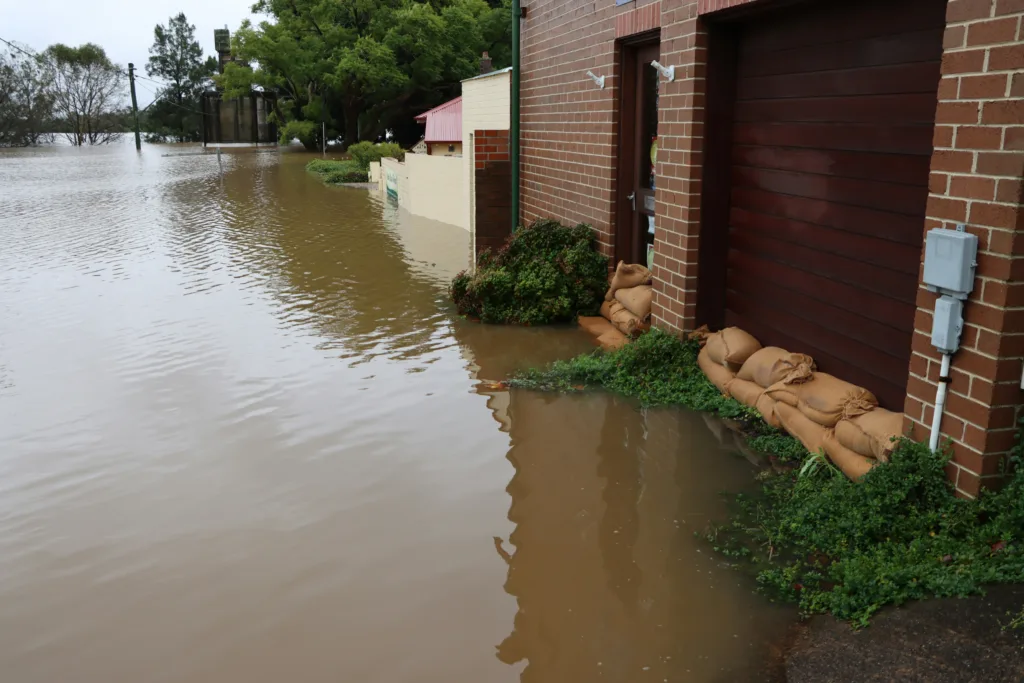Climate change is forcing workplaces to find new ways to handle the heat. But the solutions need to be managed carefully, say experts.
 More hot days in the coming years mean heat stress will be an increasing problem for workplaces. : James Goldie, 360info CC BY 4.0
More hot days in the coming years mean heat stress will be an increasing problem for workplaces. : James Goldie, 360info CC BY 4.0
Climate change is forcing workplaces to find new ways to handle the heat. But the solutions need to be managed carefully, say experts.
“We call it a heat hangover.”
When Dr Matt Brearly visits construction sites in Australia’s tropical north, he sees workers pushing through the heat without complaint—and he’s worried.
“They take that home and it impacts how they treat their family. They might skip football training, or they might not go to the kids’ after school activity… potentially with something to numb the pain like alcohol or medication.”
Employers, regulators, unions and experts are all learning how to manage heat stress on the job as Australia heats up. But the way forward at work is still a subject of contention.
The impacts of COVID-19 and climate change are combining to put unprecedented pressure on workers, according to Professor Lauren Rickards from RMIT. Last year she and her colleagues asked workers how climate change was impacting their work.
“It’s the fact they didn’t sleep at all last night, and then the trains are down and they can’t get to work… they’re worried about their kids, you know they’re sleep deprived, and they can’t get home.”
“Climate change impacts are about the crunch.”
And those impacts are increasing. Data from Safe Work Australia shows the median compensation for a heat stress claim is rising, increasing by 25 percent over the last 20 years after accounting for inflation.
So how do workers protect themselves?
State Workplace Health & Safety (WH&S or OH&S) laws are the primary protection for most workers, imparting a broad duty of care on employers to protect workers from threats including heat stress.
Similar Federal laws apply where workers are employed by Commonwealth bodies, such as in 2004 when the Australian Defence Force was fined over the death of a soldier training in extreme heat.
Rickards suggests current laws are in need of reform, arguing that “Safety is… the end result of a whole range of factors. Any of our OH&S [laws] based on single hazards or threats… are simply not going to be effective.”
Some unions are going further, pushing for blanket walk-off rights for workers when conditions get too hot. The Construction, Forestry, Maritime, Mining and Energy Union (CFMEU) uses a model clause for bargaining agreements it negotiates, giving workers the right to stop when temperatures exceed 35 degrees Celsius in most states, and 37.5 degrees Celsius in Western Australia.
The CFMEU did not respond to requests for comment, but in 2019 it told news.com.au, “The policy does not mean workers automatically walk off the job when the temperature rises. It means there is a requirement to better manage a job site so heat impacts are managed and minimised.”
But some other unions would prefer to rely on existing WH&S laws. “Our experience with [bargaining agreement] clauses related to extreme heat is they are very general in nature,” said Dave Henry of the Australian Manufacturing Workers’ Union.
“We rely upon our union health and safety structures in workplaces to play a role in protecting our members, particularly our Health and Safety Representatives, who are empowered to direct cease work or issue ‘provisional improvement notices’ on their employer.”
Brearly sees both sides of the argument. “This is far more complex than most people appreciate. There is a lack of willingness, especially within the male workforce to report or say, ‘It’s hot, I’m hot. Can we have a break?’ When there’s a black and white policy, it takes the pressure off.”
Changing workplace cultures, especially in male-dominated industries, is one key to managing the risks, according to Brearly.
“The ones that get warm are the ones that do the work… So if you’re feeling heat stress symptoms, we shouldn’t look at you as being weak. You’re the one getting the job done. We spend more time on culture than we do on the heat stress side of things.”
Rickards agreed, noting that resilience “has been commandeered in some places as a kind of neo liberal kind of individual responsibility idea, which is like, ‘Well suck it up.’”
One of the tools Brearly uses to educate workers is thermometer pills. The pills record a person’s body temperature for several days while they work.
“We say, ‘What happened at 1100?’” Brearly said, describing debriefs with work crews. “‘Look at the core temperature; you’re way too steep for that duration of job.’”
“You’ll hear a lot of ‘Holy shit.’ And we just know, their mind is so open right there.”
The pills are a powerful monitoring tool, but they’re a tool ripe with potential for misuse. Brearly said he managed the data like a research study: “We say to the management, ‘This is the workers’ data, they’re signing up for it, they get the data… we’re not going to give you individual data from your workers.”
Rickards warned that although the pills were being used as educational tools now, workplaces could choose to place the burden of managing heat stress on workers.
“It’s just a really worrying example of the kind of adaptation solution that could be proposed more and more… putting the problem on the individual’s body response instead of a more systemic response.”
This article has been republished. It was first published on February 3, 2023.
Originally published under Creative Commons by 360info™.
Editors Note: In the story “Record heat” sent at: 22/05/2023 07:51.
This is a corrected repeat. Minor fix to map embed to facilitate sharing.












